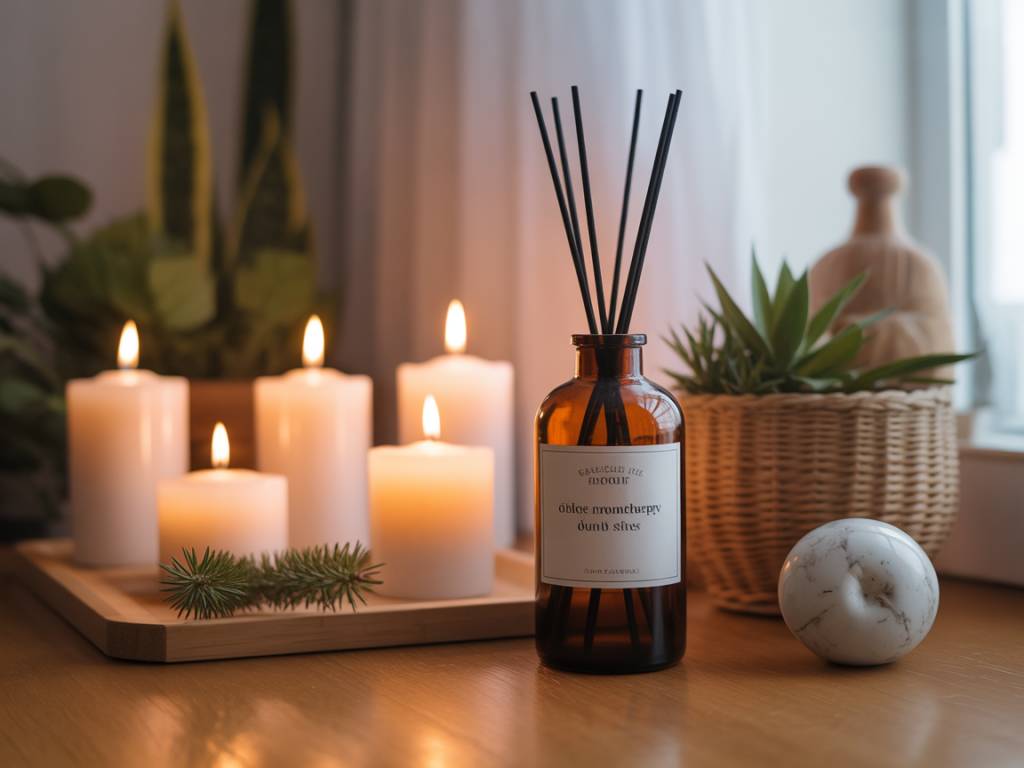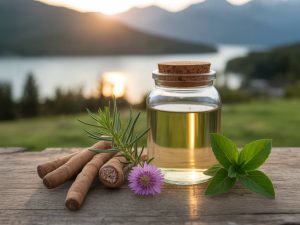
Understanding Aromatherapy and Its Benefits
Aromatherapy is a holistic healing practice that uses natural plant extracts to promote health and well-being. Sometimes referred to as essential oil therapy, it involves the use of aromatic essential oils medicinally to improve the health of the body, mind, and spirit. It enhances both physical and emotional health and is often used to reduce stress, improve mood, increase energy, and support better sleep.
When integrated into the home environment, aromatherapy can foster a sense of calm and sanctuary. Incorporating natural scents into your living space not only elevates the aesthetic appeal but can also turn ordinary areas into places of rest and rejuvenation. As more people seek refuge and relief at home, using aromatherapy as part of a wellness-focused lifestyle is becoming increasingly popular.
The Psychology of Scent and Its Impact on Mood
Our sense of smell is directly connected to the limbic system, the part of the brain that regulates emotions, memories, and arousal. This neurological connection explains why certain scents can evoke powerful emotional responses and memories. For example, the fresh scent of pine can transport someone to a forest walk, while the aroma of lavender might inspire feelings of peace and relaxation.
Different essential oils are known for their specific therapeutic effects:
- Lavender: Calming and soothing, ideal for reducing anxiety and promoting restful sleep.
- Peppermint: Invigorating and clarifying, useful for enhancing concentration and energy levels.
- Eucalyptus: Clears the airways and can relieve congestion; often used to support respiratory health.
- Lemon: Refreshing and uplifting, great for improving mood and purifying the air.
- Ylang Ylang: Exotic and balancing, known for alleviating stress and improving mood stability.
Understanding the effects of different scents allows you to tailor your home’s atmosphere to your specific emotional and physical needs.
Choosing the Right Essential Oils for Your Home
When selecting essential oils, quality is paramount. Look for 100% pure, therapeutic-grade essential oils without synthetic additives or dilutions. Reputable brands usually disclose their sourcing and testing methods, which provides assurance of purity and potency.
Consider the function of each space in your home when choosing scents:
- Living Room: Opt for warm, inviting notes like orange, cedarwood, or geranium to make guests feel welcome and to foster relaxed interactions.
- Bedroom: Use calming oils such as lavender, chamomile, or sandalwood to create a tranquil environment conducive to sleep and relaxation.
- Kitchen: Citrus oils like lemon, lime, or grapefruit can energize the space and help neutralize cooking odors.
- Bathroom: Eucalyptus or tea tree oil can purify the air and lend a spa-like freshness.
- Home Office: Enhance focus with rosemary, peppermint, or basil, all of which are known for their stimulating properties.
Methods for Diffusing Natural Scents at Home
There are several effective methods for dispersing natural scents throughout your home. The choice largely depends on your personal preference, budget, and maintenance flexibility:
- Ultrasonic Diffusers: These use water and ultrasonic vibrations to disperse a cool mist of essential oils. They generally double as humidifiers, which can be beneficial in dry environments.
- Nebulizing Diffusers: These do not use water or heat and deliver pure essential oil fragrance in a more concentrated form. They are ideal for larger spaces or for therapeutic use.
- Candle Diffusers: These work by using the heat from a candle to gently warm and evaporate the oil. They create both a relaxing glow and scent, but should never be left unattended.
- Reed Diffusers: Made from a combination of essential oils and carrier oils, these provide a passive, flame-free option for scent diffusion. They are particularly useful for continuous fragrance in smaller areas.
- Room Sprays: Dilute essential oils in water or alcohol to create a DIY air freshener that can be spritzed as needed.
Creating a Personalized Scent Ritual
Integrating scent into daily rituals can enhance mindfulness and promote well-being. Scent rituals can be as simple or elaborate as you like, and should align with your routines and lifestyle. You might choose to diffuse lavender in the bedroom 30 minutes before bedtime, or apply a peppermint roll-on before your morning work session.
Here’s how to establish a supportive scent ritual at home:
- Set an Intention: Decide what you need most from your aromatherapy practice—relaxation, energy, focus, or emotional balance.
- Create Consistency: Use specific scents at consistent times to help cue your body and mind. Over time, you may find that inhaling a particular scent prepares you for sleep or enhances productivity.
- Complement with Other Elements: Pair your scent ritual with calming music, soft lighting, or herbal teas for a multi-sensory experience.
Safety Considerations and Best Practices
While essential oils are natural, they are also very potent and must be used with care, especially around children, pets, and those with respiratory or skin sensitivities. Always dilute essential oils with a carrier oil when applying them topically, and avoid applying them directly to skin without proper dilution.
Here are a few important guidelines:
- Research Before Use: Some essential oils, such as tea tree or eucalyptus, are potentially toxic to pets. Ensure the oils you choose are safe for all household members.
- Ventilation: Always use essential oils in a well-ventilated room to prevent headaches or irritation.
- Storage: Keep oils in dark glass bottles away from sunlight and heat to preserve their integrity.
- Patch Tests: Conduct a skin patch test when trying a new oil to evaluate for allergic reactions.
Consulting with a certified aromatherapist can provide additional insights, particularly if you have specific health concerns or are considering pregnancy-safe options.
Infusing Natural Scents Beyond the Diffuser
In addition to diffusers, there are many creative ways to incorporate natural scents throughout your home:
- Scented Linens: Add a few drops of essential oil to wool dryer balls or lightly spritz linens with a homemade lavender spray.
- Aromatherapy Bath: Blend oils with Epsom salts and baking soda for a deeply relaxing bath soak that benefits both skin and mood.
- Closet Sachets: Fill sachets with dried herbs like lavender or cedar chips to naturally perfume clothing and deter pests.
- Homemade Cleaning Products: Combine essential oils like lemon and tea tree with vinegar and baking soda to create effective, natural cleaning solutions with pleasant aromas.
Designing a Scent-Centric Home Sanctuary
Curating a home environment that supports peace and restoration involves more than aesthetics—scent plays a critical, often overlooked role. Each room can be infused with a distinct scent signature that aligns with its function and emotional tone. This strategic use of aromatherapy supports mental clarity during work, serenity during rest, and invigoration during daily routines.
Whether you live in a small apartment or a spacious house, integrating natural aromas is an accessible, low-cost way to improve your indoor atmosphere. By intentionally using essential oils and natural scents, you create a sensory experience that nurtures the body and uplifts the mind—transforming your residence into a true sanctuary from the stress of the outside world.

